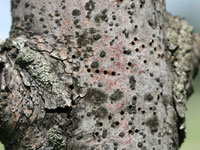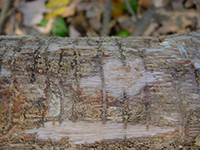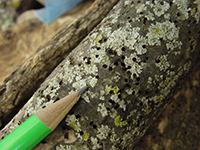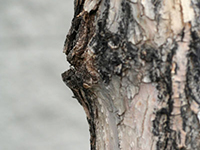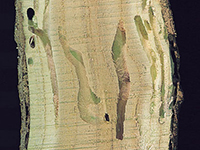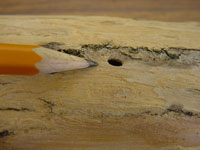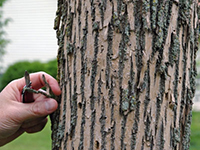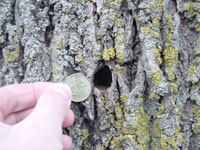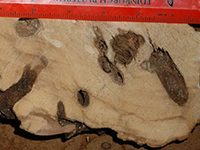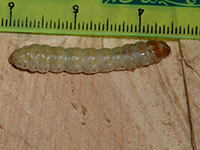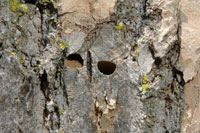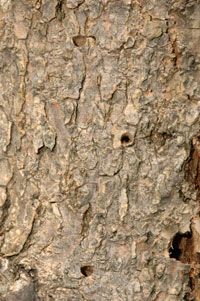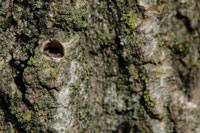Extension > Garden > Diagnose a problem > What's wrong with my plant? > Deciduous Trees > Ash > Holes in trunk or branches
Ash > Trunk > Holes in trunk or branches
1 of 7
Ash bark beetles
- Exit holes first appear in May in trunks and branches
- Exit holes are 1/8 inch wide and round
- Galleries cut across the grain in sapwood; typically with two arms starting from a central chamber
- Adults are 1/8 inch long and brown
- Larvae are small, about 1/8 inch long, brown head, whitish body, lacks legs; is bent in a C-shape
- More information on Ash bark beetles
2 of 7
Clearwing borers
Ash borer and banded ash clearwing
- Exit holes first appear in June and July
- Exit holes are round and 1/4 inch wide; frass (sawdust and excrement) can be conspicuous underneath
- Galleries occur deep in sapwood
- Pupae stick out of exit hole, empty pupal cases are commonly observed after moths have emerged
- Adults are wasp-like, lacking scales on most of their wings
- Larvae are caterpillars; have brown head and cream-colored body; up to 1 1/3 inch long
- More information on Clearwing borers
3 of 7
Redheaded ash borer
- Exit holes first appear in June
- Exit holes are round and 3/8 inch wide
- Galleries start in phloem and eventually enter into sapwood; generally not very serpentine
- Adults are 1/2 to 5/8 inch long; reddish brown with four yellow bands across their wing covers
- Larvae are up to 4/5 inch long, whitish, cylindrical; area behind head enlarged and round, head generally inconspicuous; legless
- More information on Redheaded ash borer
4 of 7
Flatheaded borers
Primarily Chrysobothris sexsignata
- Exit holes first appear in May and June
- Found nearly always in black ash
- Exit holes are oval shaped and 3/16 inch wide
- Galleries start in phloem and eventually enter into sapwood; generally not very serpentine
- Adults are 1/2 inch long, bullet-shaped, and bronzed colored
- Larvae are whitish, flattened, up to 1 inch long; area behind enlarged and flattened; head generally inconspicuous; legless
- More information on flatheaded borers
5 of 7
Woodpeckers
- Holes are roundish and range in size from 1/4 to 1/2 inch
- Larger holes, 1 1/2 or more inches may be nesting holes and suggest softer heartwood inside the tree
- Bark often removed around holes
- Woodpecker probing may indicate presence of wood boring insects under bark
- Repetitive tapping or drumming heard
- Birds of varying black and white patterns, often with some red, seen tapping on trees
- More information on Woodpeckers
6 of 7
Carpenterworms
- Exit holes are round and large, about 1/2 inches
- Galleries starting in sapwood eventually entering heartwood
- Large amount of sawdust often present at base of ash
- Heavily infested ash can become gnarled and misshapen
- Stout bodied moths, black and light gray mottled forewings as large as 2 1/2 to 3 inches
- Yellowish white caterpillars with brown heads; 2 to 3 inches long
- More information on Carpenterworms
7 of 7
Emerald ash borers
- Chewing damage caused by adults occurs late May to early August
- Create D-shaped exit hole
- Slender bodied, 1/3 to 1/2 inch long; iridescent green with coppery colored head
- More information on Emerald ash borers



